“how To Read More” “how To Read Faster” “how To Read Daily” STOP STOP Stop STOP This Is Not
“how to read more” “how to read faster” “how to read daily” STOP STOP stop STOP this is not a competition. read slowly, read when you’re in the right state of mind, really savour it, read for pleasure, read for yourself. don’t read for performance, stats or to compare yourself to others
More Posts from Lrs35 and Others

TIPS:
Tips For Characterization
21 Harsh But Eye-Opening Tips From Great Authors
The Importance Of Body Language
34 Writing Tips That Will Make You A Better Writer
Things Almost Every Author Needs To Research
Eight Short Story Tips
How To Stop Procrastinating
Ten Exercises In Creativity
How To Show (Not Tell)
Ten Ways To Avoid Writing Insecurity
Why Research Is Important In Writing
Five Ways To Get Out Your Comfort Zone
Seven Ways To Use Brain Science To Hook Readers And Reel Them In
The Difference Between Good And Bad Writers
Five Essential Story Ingredients
Formatting Your Manuscript
Four Ways To Have Confidence In Your Writing
99 Ways To Beat Writers Block
You’re Not Hemingway, Helping You Develop Your Own Skill
Best Apps For Writers
Online Whiteboard
This Sentence Has 5 Words
GRAMMAR (WORDS):
Urban Legends From The World Of Grammar
20 Common Grammar Mistakes
Synonyms For Said
Alternatives For But
Alternatives For Angry
Alternatives For Whispered
200 Words To Describe Light
45 Ways To Avoid Saying Very
Colour Names
Other Ways To Say…
Lay vs Lie
Make Words Longer
Words And Meanings
Common English Mistakes
Online Etymology Dictionary
Tip Of My Tongue
Cliche Finder
NAMES:
7 Rules Of Picking Names For Fictional Characters
Names In Different Time Periods
Behind The Name
Meaning Of Names
Fake Name Generator
Random Name Generator
Quick Name Generator
Fantasy Name Generator
Baby Names Country
Muslim Names And Meanings
Indian Names And Meanings
Name Playground
NOVEL:
How To Rewrite
Editing Recipe
How To Write A Novel
Writing 101: Revising Your Novel
Revising Your Novel: Read What You’ve Written
Finishing Your Novel
Novel Outlining 101
Outline Your Novel In 30 Minutes
13 Most Common Errors On A Novels First Page
How To Organize And Develop Ideas For Your Novel
CHARACTER DEVELOPMENT:
Family Tree Maker
Tips For Characterization
Character Trait Masterlist
Character Bio Help
Character Writing Exercise
123 Ideas For Character Flaws
Three Ways To Avoid Lazy Character Description
How To Create Fictional Characters
Writing Magical Characters
Character Development Sheet
Character Development Worksheet
Character Chart
Character Chart For Fiction Writers
100 Character Development Questions For Writers
Ten Questions For Creating Believable Characters
Ten Days Of Character Building
Writing Effective Character Breakdowns
PLOT, CONFLICT, STRUCTURE and OUTLINE:
When To Change Paragraphs
36 (plus 1) Dramatic Situations
How To Write A Death Scene
The Snowflake Method
Effectively Outlining Your Plot
Tips For Creating A Compelling Plot
One Page Plotting
How To Create A Plot Outline In 8 Easy Steps
Choosing The Best Outline Method For You
Creating Conflict And Sustaining Suspense
Conflict Test
What Is Conflict?
Writing The Perfect Scene
How Can You Know What Belongs In Your Book?
SETTING, WORLDBUILDING AND FANTASY:
Masterpost For Writers Creating Their Own World
World Building 101
Creating A Believable World
Maps Workshop - Developing The Fictional World Through Mapping
Creating Fantasy And Science Fiction Worlds
Writing Fantasy
Myths
Creating The Perfect Setting
POINT OF VIEW:
Establishing The Right Point Of View
How To Write In Third Person
The I Problem
OTHERS:
Types Of Crying
Eye Colours
Skin Tones
Who Do I Write Like?
Write Rhymes
Survive Nature
How To Escape After Being Buried Alive In A Coffin
Any advice on back and forth dialogue? Like properly portraying an argument? I think all the spaces will get bothersome to the reader...
(Since arguments are the hardest type of back and forth dialogue to master, and other dialogue follows the same structure but in a more flexible manner, I’ll focus on arguments specifically…)
Writing an argument.
Everyone’s process for this is a little bit different, but here’s a look at mine, which has helped me reach the best end result (after many failed argument scenes in the past):
1. Dialogue. I like to write this as a script of sorts first, playing the scene in my head and only writing down the words and some vague comments regarding what the characters might be experiencing or doing. I leave breaks in the dialogue where the characters naturally pause from build ups of emotion, and add in all the em-dashes and ellipsis my heart desires (despite knowing a lot of them won’t make it through the reread, much less the final draft.)
2. Action. Not only does having your characters do things while they argue make the whole scene feel more realistic and plant it within the setting, but it also provides a great way for your characters to express things they don’t have the words to say. These “actions” can be facial expressions and body language, movement, or interaction with the objects in the setting, such as gripping a steering wheel too tightly or slamming a cupboard or tensely loading a gun.
3. Emotion. I save this for last because I find emotion very hard to write into narratives, but no matter when you write it or how you feel about it, feeling the pov character’s internal emotions is integral to the reader’s own emotional connection to the argument. Remember though, emotions should be shown and not told. Instead of saying the character is angry, describe what that anger is doing to them physically (how it makes them feel), and what desires it puts in them (how it makes them think.)
Other equally (if not more) important factors:
- Build tension slowly. Arguments will never be believable if the characters go from being calm and conversational to furious and biting in a single paragraph. The reader must feel the character’s anger build as their self-control dwindles, must hear the slight tension in their voice and the sharpness of their words as the scene leads up to the full blown argument.
- Vary sentence length. Arguments in which characters shoot single short sentences back and forth often feel just as stiff and unnatural as arguments where characters monologue their feelings for full paragraphs. If a character does need to say a lot of things in one go, break it up with short, emotional reactions from the other characters to keep the reader from losing the tension of the scene. Likewise, if characters don’t have bulk to their words, try including a few heavy segments of internal emotional turmoil from the pov character to make the argument hit harder instead of flying by without impact.
- Where did this argument start? Most arguments don’t really start the moment the words begin flying, but rather hours, days, weeks, even years before. If you as the author can’t pinpoint where the character’s emotions originated and what their primary target or release point is, then it’s unlikely the reader will accept that they exist in the first place.
- Characters want things, always. Sometimes arguments center around characters who vocally want opposing things, but often there are goals the characters hide or perhaps even from themselves. Think about what goals are influencing the characters in the argument while you’re writing it in order to make sure everything is consistent and focused.
Keep in mind that you don’t have to do all these things the very first draft. My arguments consistently have little emotion and even less build up until the second or third draft. As long as you return to these things as you continue to edit, the final result should feel like a fully fleshed out and emotional argument.
For more writing tips from Bryn, view the archive catalog or the complete tag!

abstract and modern art haters are sooo snobby like klein literally Created an entirely new pigment and then painted a canvas in a way where the brush strokes wouldn't be visible. the insinuation that people with no skill could reproduce that is so annoying because unless you are skilled at color mixing and painting you definitely couldn’t lmao
intro to lit theory
Authorship: Barthes, Death of the Author; Foucault, What is an Author?
Formalism: Eichenbaum, The Theory of the “Formal Method”; Brooks, from The Well Wrought Urn: Studies in the Structure of Poetry
Structuralism: Saussure, Course in General Linguistics ; Barthes, from Mythologies
Psychoanalysis: Freud, The Interpretation of Dreams; Lacan, The Mirror Stage & The Significance of the Phallus
Ideology: Althusser, Ideology and Ideological State Apparatuses; Foucault, Truth and Power
Feminism & Queer: Sedgwick, from Between Men; Cixous, The Laugh of the Medusa; Wittig, One Is Not Born a Woman; Butler, Gender Trouble
Deconstruction: Derrida, from Of Grammatology;
Postcolonial: Fanon, from The Wretched of the Earth; Spivak, Can the Subaltern Speak?
Cultural Materialism: Adorno & Horkheimer, The Culture Industry: Enlightenment as Mass Deception; Williams, Base and Superstructure in Marxist Cultural Theory
these are about 2/3 of the readings for my intro to lit theory course, if you’ve ever wondered what one studies on such courses, the links lead to free pdfs

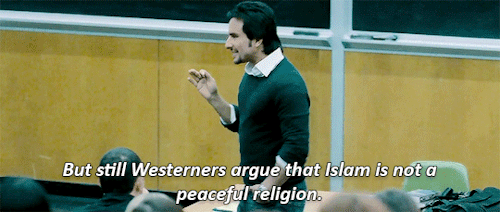
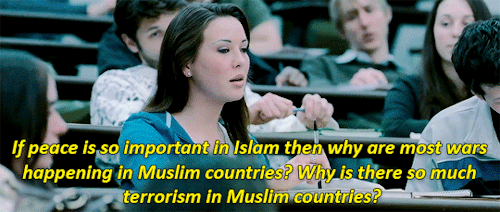
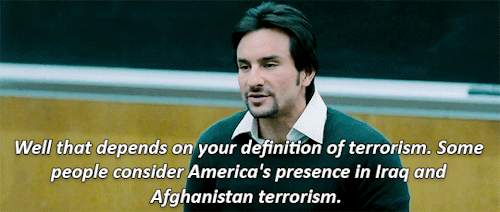

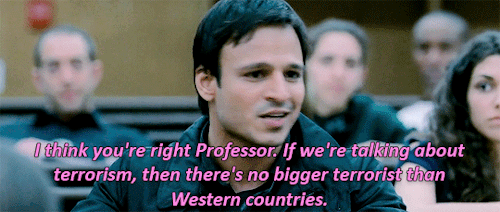
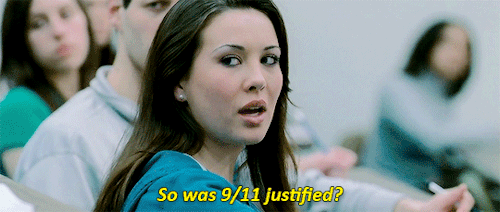
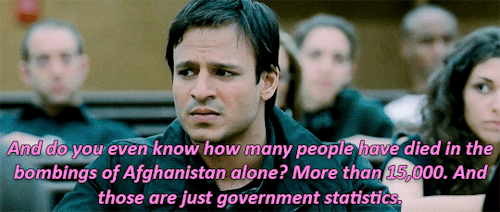
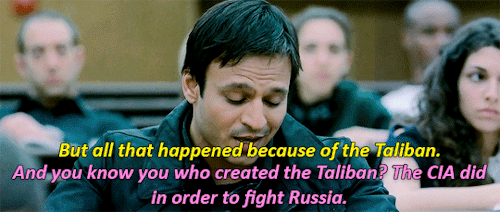
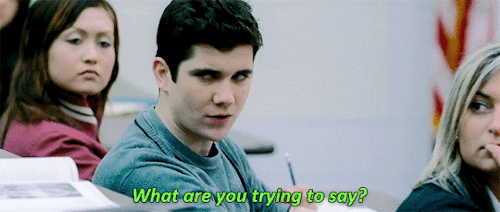
What's your advice on writing a strong, solid chapter one? Something that will grab the reader's attention and make them beg on their knees for more?
Tips for Writing a Strong First Chapter
Note: in the examples, I’m using the second chapter as Harry Potter rather than the first, which was really more of a prologue.
1. Create a “snapshot” of your character’s normal life…
One of the most important things you can do in the first chapter is give your reader a sort of “snapshot” of your character’s life before the the inciting incident turns everything upside down. Otherwise, if we don’t know what their life is like before everything changes, the inciting incident won’t be a change. It’ll just be something that happens.
In Twilight, we saw Bella being the run-of-the-mill daughter of divorced parents. In Harry Potter, we saw Harry being the unwanted and much-maligned ward of muggle relatives, while struggling with emerging wizard powers. In Star Wars, we saw Luke being the bored farm boy, longing for heroism and adventure. In The Hunger Games, we saw Katniss taking care of her mom and sister by hunting for extra food for them with Gale.
2. Show us who they are–show us their strengths and their flaws…
Most stories feature a protagonist who changes in someway throughout the course of the story. This is the character arc, and it can either be positive (the most common) or negative. Positive story arcs stem from the character’s flaws that are established at the beginning of the story. While they have strengths, too, it’s the flaws that dominate and make their lives such a mess that the reader is anxious to see how their lives will change. The character will overcome those flaws through the events of the story, so in the end the reader can marvel at how far they’ve come and how much better their lives are as a result of this change. In a negative arc, it works in the exact opposite way. Sometimes there are static arcs, where the character doesn’t change but changes someone around them or their environment, and sometimes you get a little hybrid of both.
In Twilight, we see a girl who’s a little selfish, a little closed off, and very codependent. In The Hunger Games, we see a girl who feels helpless against the oppressive government making her life, and the lives of everyone she cares about, a living hell. In Star Wars, we see a boy who’s cocky and idealistic.
3. Show us who and what matters in their world…
Another important element that should be introduced in the first chapter is who and what matters to the main character. These are the initial stakes–the thing that motivates them into action when the world turns upside down. In some cases, the world turns upside down because something happened to them.
In Twilight, we meet Bella’s mom and dad, but in many ways, the absence of anyone else here is part of what serves as motivation for Bella to want her life to change and to want to belong to something bigger than herself. It’s much the same in Harry Potter, where the only people who really matter to him are people who died when he was a baby. In The Hunger Games, we meet Katniss’s mom and sister, her best friend Gale, and we learn about Katniss’s father and Gale’s family, and the boy with the bread. In Star Wars, we meet Luke’s Uncle Owen and Aunt Beru.
4. Show us their world…
Part of the point of the inciting incident is that it’s going to change the known world for the main character. This really dovetails with #1, because their normal life happens within this world. In some stories, a character’s “world” might be their work and home life or their home and school life. In other stories, their “world” might be the small village they live in and the plagued-by-evil-king kingdom the village is a part of.
In Twilight, Bella’s world was uprooted right at the beginning and exchanged for the tiny, perpetually overcast town of Forks, Washington. In The Hunger Games, Katniss’s world was District Twelve and the oppressive Capitol beyond. In Star Wars, Luke’s world was a moisture farm on the desert planet of Tatooine, part of a larger Civil War-wracked galaxy.
5. Start the story when something interesting is happening…
We often hear the advice “start in the middle of the action” or “begin the story with action” and this is often misinterpreted, either to mean you should start with the inciting incident or start with a big car chase or heart-pounding battle. Neither of which is true. Beginning the story with action just means you should start the story with something interesting happening rather than with a big info dump. That doesn’t mean you can’t include exposition in your opening, but weave the exposition into something interesting happening.
In Twilight, the story opens with Bella being dropped off at the airport by her mom so that she can move to Washington to live with her dad. In The Hunger Games, the story opens with Katniss getting ready to go hunting with Gale, then walking through her district on her way to meet him. In Harry Potter, we see Harry and the Dursleys getting ready for Dudley’s birthday party.
If you hit all five of these points in your first chapter, not only can you be sure to create a strong first chapter from which to launch the rest of your story, you can be sure your reader will have everything they need to start getting invested in your main character and the world around them. :)
Writing Advice Posts: A Handy Reference Guide
(Updated 8/6/19) Hey all, I’ve got quite a few writing advice posts & answered Asks on my blog at this point, so I’m making this reference guide to make it easier to find what you’re looking for. Hope it helps!
Free Resource Library Downloads
All of these PDFs are available to download in my Free Resource Library.
Creating Character Arcs Workbook
Point of View Cheatsheet
Dialogue Checklist
Setting Checklist
Questions to Ask Before Hiring an Editor Printable Checklist
Proper Manuscript Format Printable Checklist
Short Story & Novel Submission Templates
General
8 Ways to Improve Your Writing
10 Best Books About Writing Fiction
How to Spot Bad Writing Advice: 6 Red Flags to Look For
“Show Don’t Tell”? Not Always. Here’s When to Use Summary
How to start a story
More about starting stories
The first sentence
Weak words
Why Just About Every Published Book in the World Does 57 Things That Just About Every Book About Writing Tells You Not to Do
Creative Nonfiction Cliches to Avoid
How to Read Like a Writer
The Writing Process, Writer’s Block, & Inspiration
To all the Writers Suffering from Depression
How to Train Yourself to Write Faster
Just a friendly reminder that creativity is difficult to quantify.
Quick Writing Tip: Make a Note to Your Future Self in Your WIP
Quick Writing Tip: Take Notes!
Just a friendly reminder that writing is not always a linear process.
Quick Cure for Writer’s Block: Lower Your Expectations
Set Realistic Goals
Your Skills May Need Time to Catch Up to Your Vision
It’s Okay to Experiment and Be Weird As Fuck
Surround Yourself With Supporters
It’s okay to take a break.
Your First Draft is Raw Material
Getting into “The Zone”
Vomit Brain
Writing from Your Imagination vs. Reality
Dealing with Criticism
Getting Bored with Your Own Writing
Getting past a block
Doing research on topics you don’t have first-hand experience with
Journalling about your writing
How to Keep Yourself From Editing As You Write
Advice for Getting Over a Writing Slump
Dealing with Procrastination
Character Development
Creating Character Arcs with the DCAST Method
What Does Your Main Character Want?
How to Activate Your Passive Characters, One Verb at a Time
How to Use Description to Show Character Development
How to Create a Non-Cliched First-Meeting Scene
The “It Depends” Post
Shifting internal goals
When to identify your character’s goal
Writing about normal people with normal problems
If you’re worried about your character being too similar to someone else’s character
Describing your characters without messing up your pacing
Story, Plot, & Pacing
Quick Plotting Tip: Write Your Story Backwards
Pause at the Threshold
How to Spot an “Info-dump”
Slowing Down the Pace of Your Story Without Boring Your Reader
Time Transitions
How to Create a Non-Cliched First-Meeting Scene
Creating Conflict
When & how to cut a scene
If you’re good at creating characters but awful at creating plot
When you’ve plotted your story but can’t get started
En Media Res
Writing to Your Ideal Reader
Deus Ex Machina
Foreshadowing
Finding an Ending
What to write between moments of conflict
Starting a story with waking-up scene
How to Know When You’re Done Outlining
Description, Setting, & Worldbuilding
How to Make Your Descriptions Less Boring
How to Spot an “Info-dump”
Adding Descriptions to Intense Scenes Without Messing Up Your Story’s Flow
How to Use Description to Show Character Development
Worldbuilding: How much is too much?
Modeling your fantasy world from stuff in the real world
Internal Consistency
Utilizing Sound
Point of View
How to Choose the Right Point of View for Your Story
A Beginner’s Guide to Multiple Point of View
6 Questions to Ask About Your Point of View
How to decide if you should use first person or third person
More point of view basics
Head hopping
How to Head Hop without Head Hopping
Dialogue
How to Improve Your Dialogue
3 Ways to Make Your Dialogue More Interesting
Starting a story with dialogue
Are You Using Too Much Stage Direction?
Which is Better: Exposition or Expository Dialogue?
Publishing & Sharing Your Work
7 Tips to Build an Audience for Your Writing
Pros and Cons of Self Publishing
Quick Publishing Tip: Don’t Bury Your Gold
How to Properly Format Your Manuscript for Publication
A warning about posting writing online that you intend to publish later
Advice for writers who are worried about people stealing their work or ideas
Getting feedback on your writing
How to Create a Cover Letter for a Literary Magazine or Journal
Editing
10 Questions to Ask an Editor Before Hiring Them
Quick Revision Tip: Read Your Writing Out Loud
How to Keep Yourself From Editing As You Write
Cut the fidgeting
Are you suffering from -ing disease?
Are you Using Too Much Stage Direction?
What “Editing” Really Means
Quick Editing Tip: “That”
Quick Revision Tip: Read Faster
Editing Tip: Dialogue
Tips for Editing a Story
Should You Use a Contract When Hiring an Editor?
Quick Tip: Up & Down
…if you find any broken links please let me know and I will fix them! xo
*I recently changed the name of my blog. All of these links should work, but if you come across a “Bucket Siler has moved!” page when clicking on a link inside an old post, there’s an easy way to find what you’re looking for: In the url, delete “bucketsiler,” write “theliteraryarchitect,” then hit return. Also, let me know about it & I will fix it :)
//////////////
The Literary Architect is a writing advice blog run by me, Bucket Siler. For more writing help, check out my Free Resource Library or get The Complete Guide to Self-Editing for Fiction Writers. xoxo
friendship can be so fleeting no wonder humans are so scared to be vulnerable . what do you mean we put our hearts and souls into people only for something as simple as time to rob our bonds … what do you mean some friendships just aren't meant to last forever?? that sometimes we outgrow people we once knew better than the lines on our palms?? when the version of them we have in our heads becomes outdated, when it means nothing that we know exactly how they take their coffee and why they don't talk about their brother. that today I mean the world to somebody who might only think of me on my birthday in a years time. what an open fucking wound.
-
 ellewoodsharvardvideoessay liked this · 2 weeks ago
ellewoodsharvardvideoessay liked this · 2 weeks ago -
 telepathay liked this · 2 weeks ago
telepathay liked this · 2 weeks ago -
 telepathay reblogged this · 2 weeks ago
telepathay reblogged this · 2 weeks ago -
 yhamh liked this · 2 weeks ago
yhamh liked this · 2 weeks ago -
 suck-itt reblogged this · 2 weeks ago
suck-itt reblogged this · 2 weeks ago -
 gemofthenight reblogged this · 2 weeks ago
gemofthenight reblogged this · 2 weeks ago -
 sharedinsanitea reblogged this · 2 weeks ago
sharedinsanitea reblogged this · 2 weeks ago -
 storiesofsvu reblogged this · 2 weeks ago
storiesofsvu reblogged this · 2 weeks ago -
 trouble-coupled-in-double reblogged this · 2 weeks ago
trouble-coupled-in-double reblogged this · 2 weeks ago -
 halobaes liked this · 2 weeks ago
halobaes liked this · 2 weeks ago -
 wlwdisasterr reblogged this · 3 weeks ago
wlwdisasterr reblogged this · 3 weeks ago -
 wlwdisasterr liked this · 3 weeks ago
wlwdisasterr liked this · 3 weeks ago -
 weirdinternettrash reblogged this · 3 weeks ago
weirdinternettrash reblogged this · 3 weeks ago -
 strugglequill reblogged this · 3 weeks ago
strugglequill reblogged this · 3 weeks ago -
 silverse liked this · 3 weeks ago
silverse liked this · 3 weeks ago -
 chronically-ghosted liked this · 1 month ago
chronically-ghosted liked this · 1 month ago -
 goblink1ng666 liked this · 1 month ago
goblink1ng666 liked this · 1 month ago -
 sleepmusicland reblogged this · 1 month ago
sleepmusicland reblogged this · 1 month ago -
 scoutyyy liked this · 1 month ago
scoutyyy liked this · 1 month ago -
 picketniffler reblogged this · 1 month ago
picketniffler reblogged this · 1 month ago -
 septerain liked this · 1 month ago
septerain liked this · 1 month ago -
 scionafreynan liked this · 1 month ago
scionafreynan liked this · 1 month ago -
 prfctplcs reblogged this · 1 month ago
prfctplcs reblogged this · 1 month ago -
 unadulteratedplaidcolorbanana liked this · 1 month ago
unadulteratedplaidcolorbanana liked this · 1 month ago -
 peculiarpiscess liked this · 1 month ago
peculiarpiscess liked this · 1 month ago -
 kokoluwie liked this · 1 month ago
kokoluwie liked this · 1 month ago -
 its-in-the-woods reblogged this · 1 month ago
its-in-the-woods reblogged this · 1 month ago -
 its-in-the-woods liked this · 1 month ago
its-in-the-woods liked this · 1 month ago -
 sahiiann reblogged this · 1 month ago
sahiiann reblogged this · 1 month ago -
 sahiiann liked this · 1 month ago
sahiiann liked this · 1 month ago -
 the-only-din-i-want reblogged this · 1 month ago
the-only-din-i-want reblogged this · 1 month ago -
 the-only-din-i-want liked this · 1 month ago
the-only-din-i-want liked this · 1 month ago -
 ih34artmetalmusic liked this · 1 month ago
ih34artmetalmusic liked this · 1 month ago -
 tofics reblogged this · 1 month ago
tofics reblogged this · 1 month ago -
 soluswolf liked this · 1 month ago
soluswolf liked this · 1 month ago -
 themistypoplars liked this · 1 month ago
themistypoplars liked this · 1 month ago -
 stormsongroleplays liked this · 1 month ago
stormsongroleplays liked this · 1 month ago -
 nerd-without-a-cause liked this · 1 month ago
nerd-without-a-cause liked this · 1 month ago -
 moonlight-prose reblogged this · 1 month ago
moonlight-prose reblogged this · 1 month ago -
 zloshy reblogged this · 1 month ago
zloshy reblogged this · 1 month ago -
 blissful-dreamer reblogged this · 1 month ago
blissful-dreamer reblogged this · 1 month ago -
 bookdroagonslibrary reblogged this · 1 month ago
bookdroagonslibrary reblogged this · 1 month ago -
 1-d-a reblogged this · 1 month ago
1-d-a reblogged this · 1 month ago -
 selfsacrificingsquid liked this · 1 month ago
selfsacrificingsquid liked this · 1 month ago -
 resst reblogged this · 1 month ago
resst reblogged this · 1 month ago -
 resst liked this · 1 month ago
resst liked this · 1 month ago -
 squintyfist liked this · 1 month ago
squintyfist liked this · 1 month ago -
 raehb336 reblogged this · 1 month ago
raehb336 reblogged this · 1 month ago -
 raehb336 liked this · 1 month ago
raehb336 liked this · 1 month ago -
 gayafmermaid reblogged this · 1 month ago
gayafmermaid reblogged this · 1 month ago








